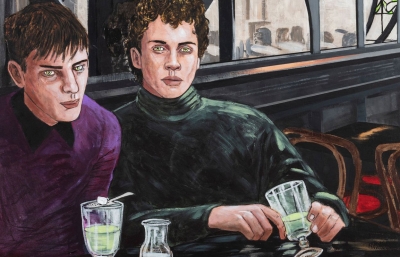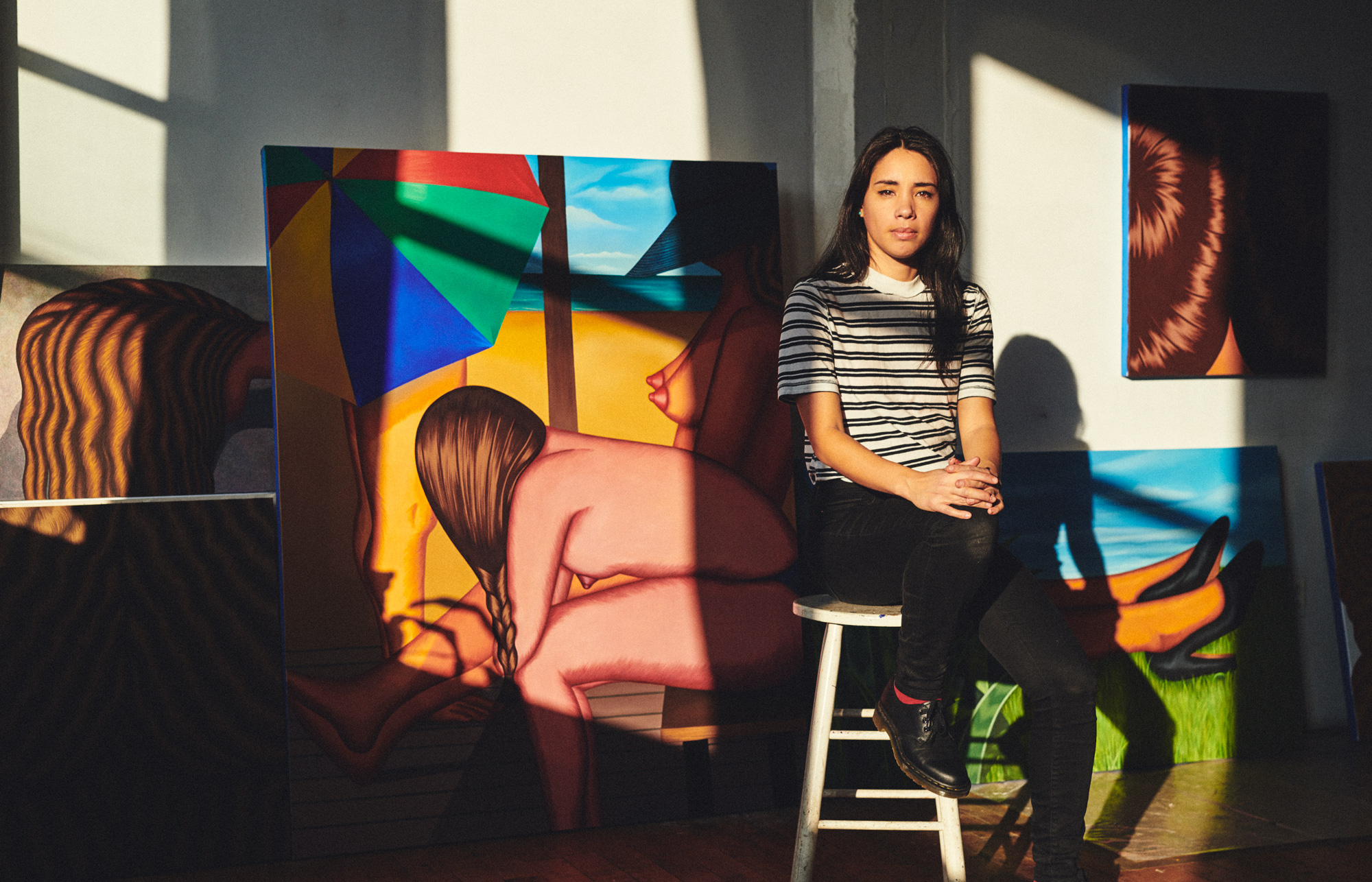
Julie Curtiss
Where The Wild Things Are
Interview by Evan Pricco // Portrait by Bryan Derballa
Do even the most elementary research on the works of Brooklyn-based, French-born painter Julie Curtiss, and words like seductive, surreal and sinister spice the headlines. There will be dissertations about hair, and oh, there is a lot of hair to discuss, and fingernails, lobsters and domesticated scenes, too. But, in conversation with Curtiss, on the precipice of a breakout solo show at Anton Kern Gallery in spring 2019, the word we keep coming back to is hypnotic. Curtiss can make a fingernail holding a lobster look cryptic, or transform a trio of safari hats into dizzying detailed hairdos drawing the viewer into a spell. When I first approached Curtiss about her work, I was curious about what era held her kinship, if she longed for some early Surrealistic impulses of the 1920s. What I found was an artist who combines graphic elements of America and painterly excellence from Europe into something wholly new and unique, making bodies of work, (literally bodies… and toilet bowls) that compel the contemporary art world to pound on her door.
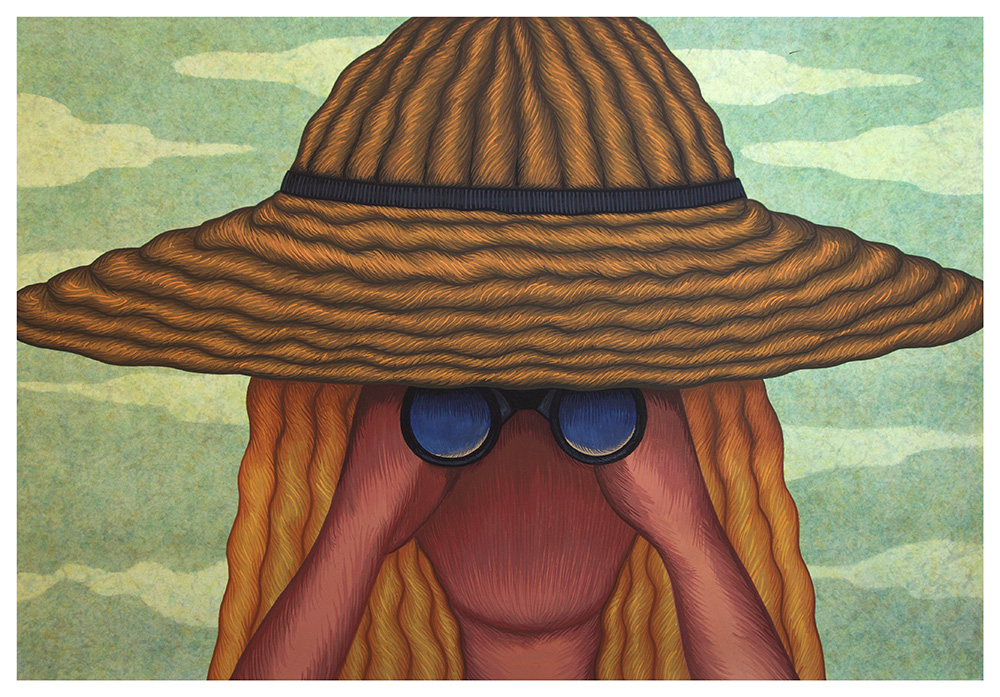
Evan Pricco: Let's talk about hair. Your depictions of hair completely floor me. So let's start there; talk to me about why it is such a prominent subject for you.
Julie Curtiss: Hair started interesting me ever since I was a teenager when I discovered old braids of hair belonging to my mother and my aunt in my attic. I realized there was this part of us that would remain long after we are gone. Hair itself is amorphous, but you can shape it; it's inert and alive at once. On women's heads it's a sexual asset, but on her body, it's considered "abject." This organic matter holds so much cultural and personal significance. It's also interesting to observe how some people recoil at the presence of human hair, as if in the presence of a corpse.
What I like about hair in painting is the pattern and repetitiveness, which is hypnotic and attractive. I particularly love Jean-Auguste-Dominique Ingres’ touch and I have always been fascinated with the way he paints hair, skin and fabrics. It’s that same kind of rendering, of softness, or sensuality, that I would like to emulate in my depiction of hair.
And then, of course, fingernails. Another Piece of the Pie may be one of my favorites of your works because there is so much to look at and read into while combining those hair and nail elements. So let's talk about both the joy and meaning of painting hair and nails.
You could say that nails and hair belong to the same category, physical attributes that women everywhere in the world tame and groom, transcending them into tools of communication and seduction. It's interesting that there is a whole international hair and nail culture out there. And I think that’s what is at the heart of my interest is how nature and culture relate, the balance between our wild side and our domesticated side. And also the weirdness of it all.

In reading some past interviews, it seems your influences range from Chicago Imagists to Nicole Eisenman, to European painters of the nineteenth century. Plus, there was a time you were working in KAWS's studio, so there is this really interesting background you come out of, but your work is so original to me, to the point where it’s almost timeless. There seems to have been this burst of clarity in your work from 2015 to now. What sort of characteristics interest and inspire you now?
When I started this new body of work in 2015, I worked at a small scale on paper, cropping my subject very narrowly to give a sense of mystery and suspense, like in noir films, but also a feeling of intimacy. Since then, I am trying to scale up the size of my works and see how big I can go while keeping the same quality and definition in my images. I want to retain a certain tension in the piece while challenging myself with more complex compositions and subjects.
For my upcoming show at Anton Kern Gallery, I am trying to work on images that would evoke scenes of everyday life in New York with a Surrealist twist, bringing some of my French background into the mix. For example, my love for Degas’ depiction of ordinary life in nineteenth-century Paris.
What is your favorite part of the process? The idea or execution? Or neither?
There is a particular pleasure in putting the last touches on a painting. It's like the last straight line for a long distance runner. It seems that nothing bad can happen anymore, and you are painting from a safe place, all the hard work behind you, which is a bit of an illusion, because I’ve had a lot of last-minute disasters. Anyways, you can definitely get a "high" from it.
Coming up with ideas can be very exciting as well. You know when you have a solid sketch with a lot of potential. The hard part for me is to find the right combination of colors, which can take a long time. I will change colors over and over again. I prefer not to figure out too much in advance, and I don’t think I could choose the colors ahead of time on the computer. As frustrating and grueling as it can be, the struggle with colors and composition is part of the process for me now.
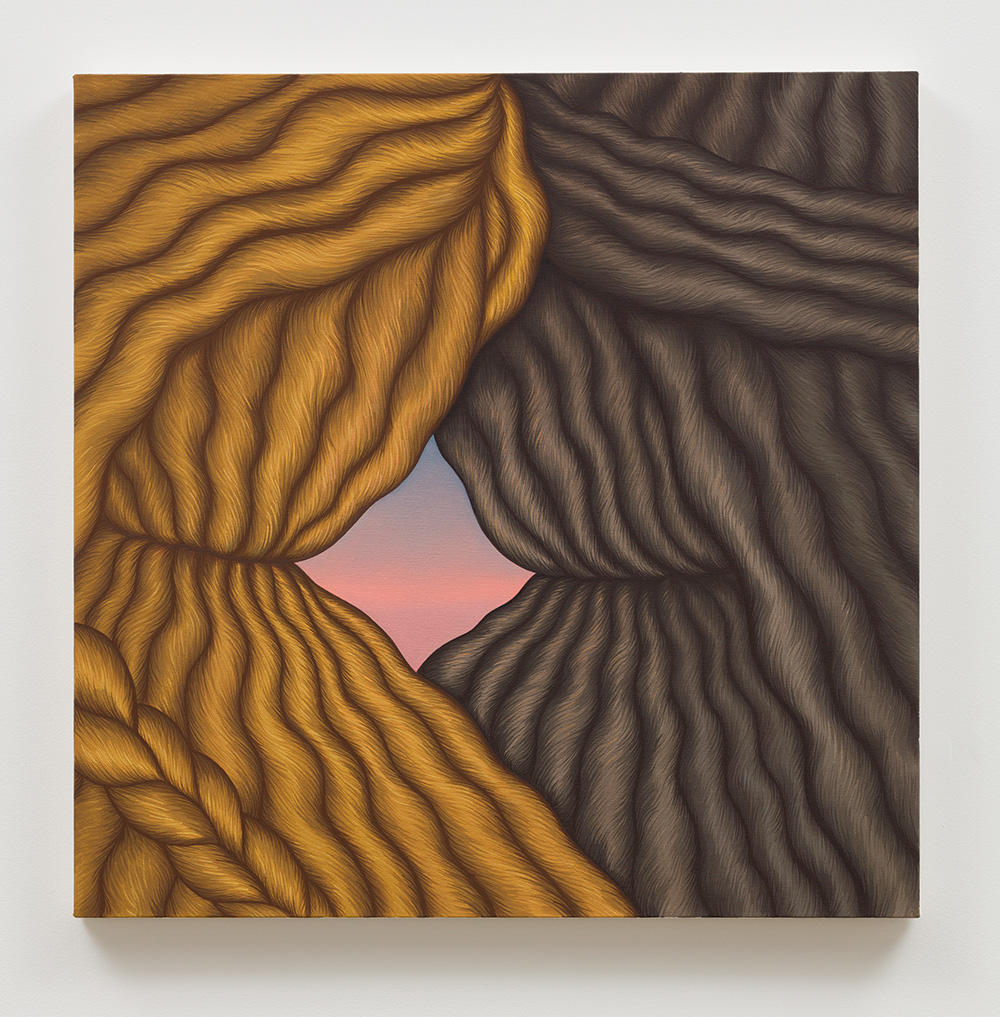
Although you are from France, you studied at the Art Institute of Chicago, a city that often gets forgotten when we consider American art. To me, Chicago is so vital in understanding American art history and culture, spawning some of my favorite artists, whether the Imagists, or Kerry James Marshall. Was it a great place for you to start?
The reason I chose Chicago for an exchange program was because I had heard of its unique underground art movement in the ’70s and ’80s. But, when I got there, I was 23 years old, and I didn't really explore any of that. It was my first time in the United States, and I was overwhelmed by the novelty. Everything was new and exciting to me. I went to class, hung out with my new friends, and actually met my future husband there, Clinton King, who is also an artist. There was so much to take in: new music, new aesthetic, popular culture, underground culture, language... a new way of seeing the world.
It’s only recently that I became more acquainted with the Chicago artists. In 2013, a friend saw my paintings and was reminded of Christina Ramberg. When I discovered her works, I had a shock, I felt too close to her and for a couple years, and really resisted her influence. I think it took me some time to figure out how to embrace her influence while finding my own language.
In 2014, I started to work for KAWS, who is an avid collector of the Chicago Imagists, Peter Saul, Westerman. When I worked for him, I had a chance to experience these works in an intimate setting, hold them in my hands. It felt pretty special.
Strangely enough, I would say that one of my early Chicago influences was the graphic novelist and illustrator Chris Ware. Even now, reading his novels reminds me so much of the Chicago mood. The way he visually ties together the macro and micro of a story, the mundane and the historical, the individual and the collective really touches me. He came up with creative ways to evoke time and space with elaborate diagrams, I’m in love with his colors and his line.
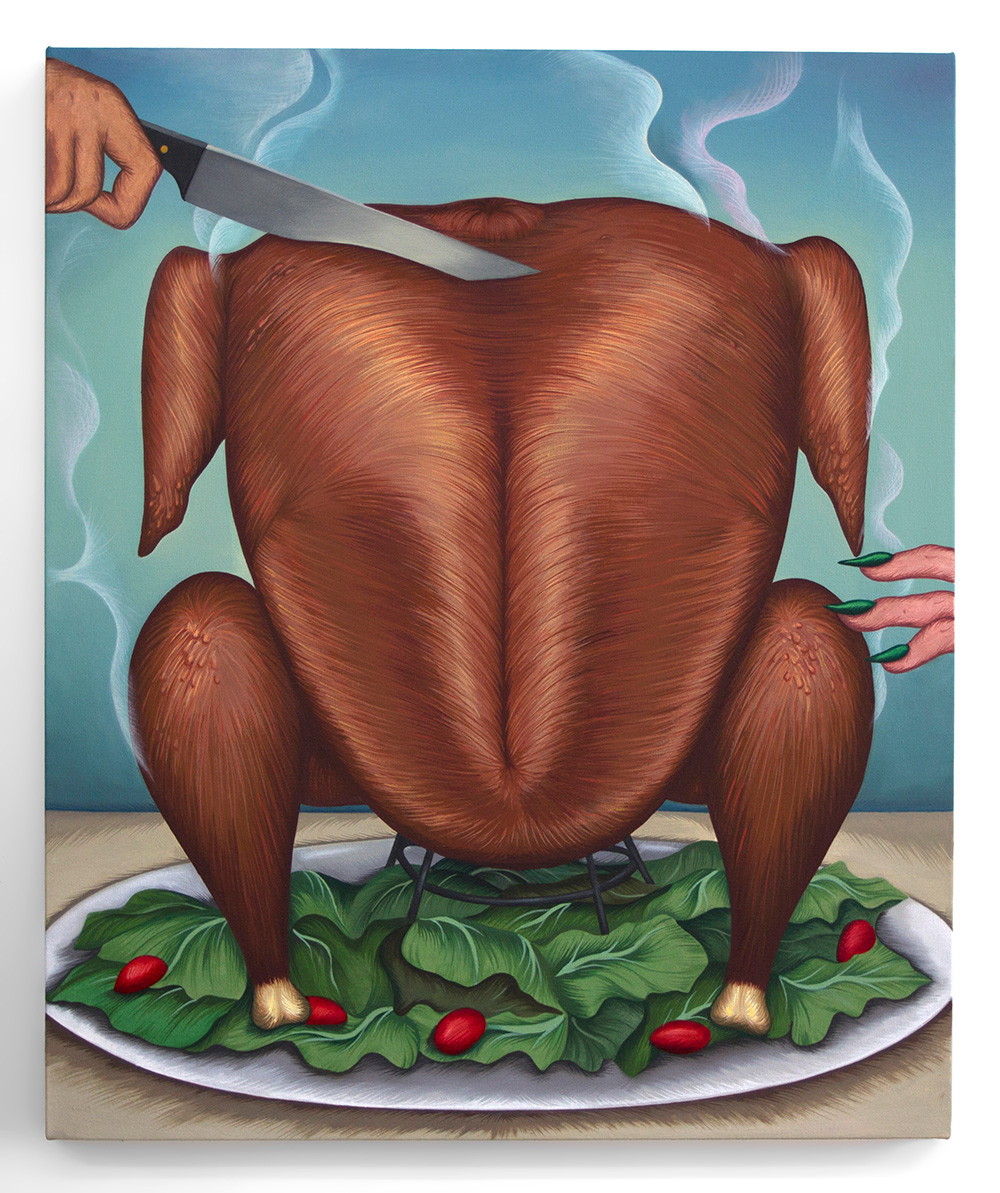
I was also thinking about how your work has some Surrealistic traits, and that when we walk into museums, not a lot of women are included in the grand overarching era of Surrealism. Am I off? Where do you think you fit into that Surrealist idea? Are you trying to turn back the clock on the genre a bit?
I remember clearly the moment when I discovered a sculptural installation by Surrealist artist Elizabeth Tanning at the Centre Georges Pompidou in Paris, more than 15 years ago. I was immediately captivated by it. I think I even tried to copy her unconsciously by making soft sculpture for a while. Her sculptures looked like body parts fused to upholstered objects or furniture.
It's probably true that women, despite how many there actually have been, weren't much included until very recently in the Surrealist movement, which is, without a doubt, similar to other art movements. Hopefully, things are changing a bit. In 2017, Susanna Greeves organized and curated Dreamers Awake, a massive show of female surrealism at the White Cube Gallery, and I am so thankful she included me. This survey show featured more than 50 female artists, from the women at the origins of the movement (Leonor Fini, Leonora Carrington, Lee Miller…) to the younger generation of artists who are bringing the genre to the front stage, including some fellow artists and friends like Loie Hollowell, Kelly Akashi and Cheyenne Julien.
But, to answer your question, I don't think I am trying to turn back the clock on the genre because I am more interested in understanding why history is the way it is. I believe that what I am doing is revisiting the genre, and paying homage to some of my favorite artists. I feel very much in the continuation of my female predecessors. So much of Surrealism is about archetypes, and male artists have extensively represented their female archetypes. The interesting thing for me, while revisiting the Surrealist language, is to turn that female archetype inside out, shifting perception, like the model descending from the pedestal and picking up a brush.
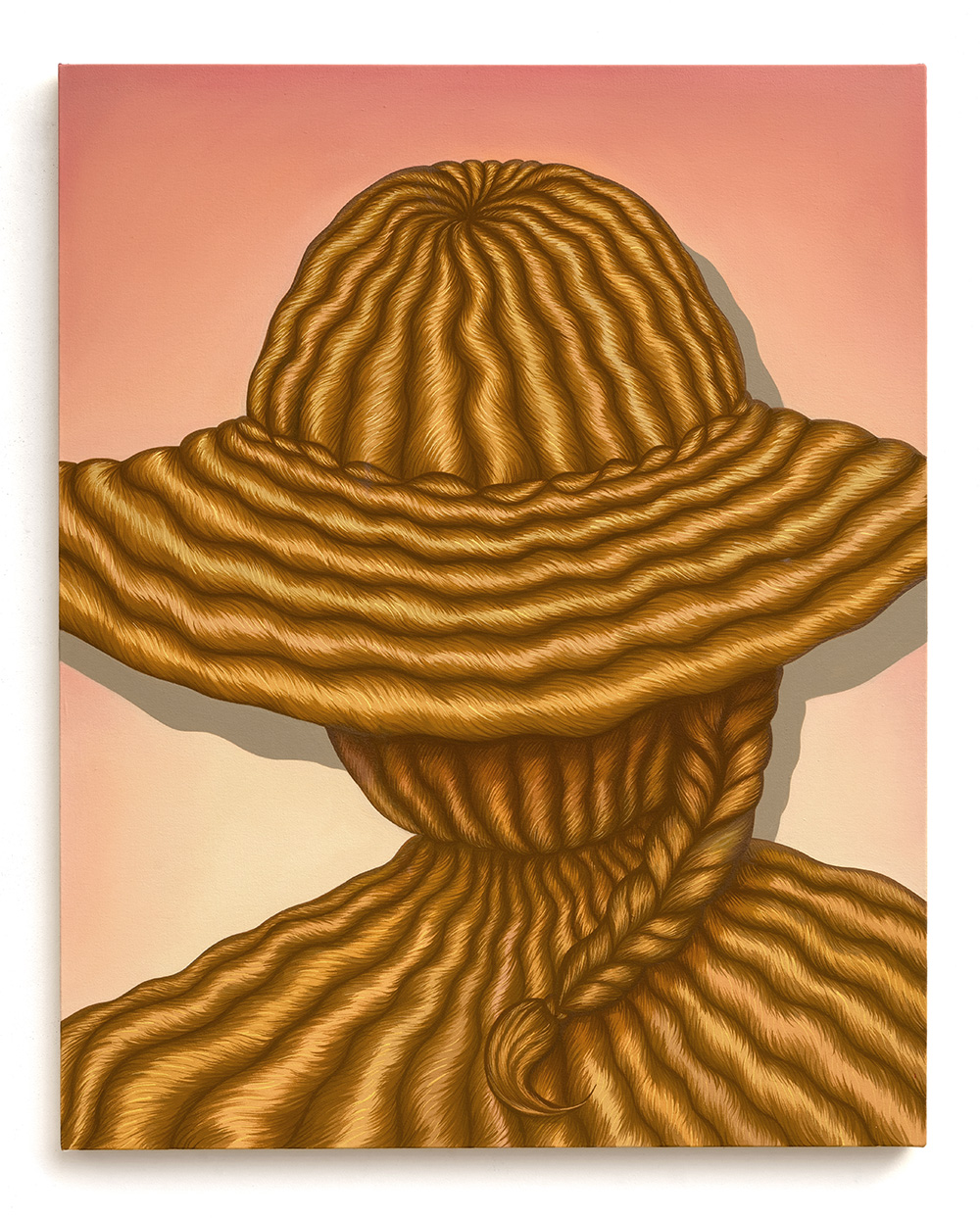
Voyeuse is one of my favorite paintings in a long time and one of things that really draws me to your work is that it contains mundane everyday moments, but with slight twists that are like snapshots from a dream. I take it you aren't, say, mapping these paintings out by taking a photograph of a lobster or fish in a sink, right? How do you start?
Ha! Yes... although life can be more surreal than art sometimes! My dad is a great cook, and I remember coming down the stairs as a kid to find a huge beef tongue soaking in the sink. That’s pretty surreal! Life itself is surreal for me, and I get my inspiration from daydreaming. When I take a stroll in public spaces, weirdly a lot of ideas come to me, or when I take the subway. I like to observe people and funny situations. I also look at art in museums, galleries, and in books. I like the strange still life, the corner of a painting, the close crop of two hands touching. Then I often come up with mental images and leave space for free association. One thing leads to another...
Have you thought about not being based in NYC, Brooklyn specifically? Does Europe or abroad come into play at all? It feels like New York is once again having a very fine moment with a ton of really talented painters all doing new and interesting things.
I lived for a short time in Tokyo and was based in Paris for a few years after graduation. So I have a little bit of experience living as an artist outside of New York. I found that living here is the easiest of all places because you could find decent wages. Maybe finding a rent controlled apartment also made things easier, meaning I could afford a small studio space on the side. Above all, like you say, New York is just an amazing place to live in. It’s the city of extremes, extreme high, low, wealthy, poor, ugly, beautiful… so much happens all year long, I love my art community, and there is just this very unique energy here.
Every once in a while, I consider other places that may have cheaper rent or way of life... I could see myself moving somewhere else for a short time, for a show maybe. Like in any relationship, sometimes you need a break.
What's your favorite color to paint with right now?
I just bought a tube of warm, light yellow oil paint. I just want to mix it into everything! Mixed into other colors, it gives them this bright, warm, optimistic hue.
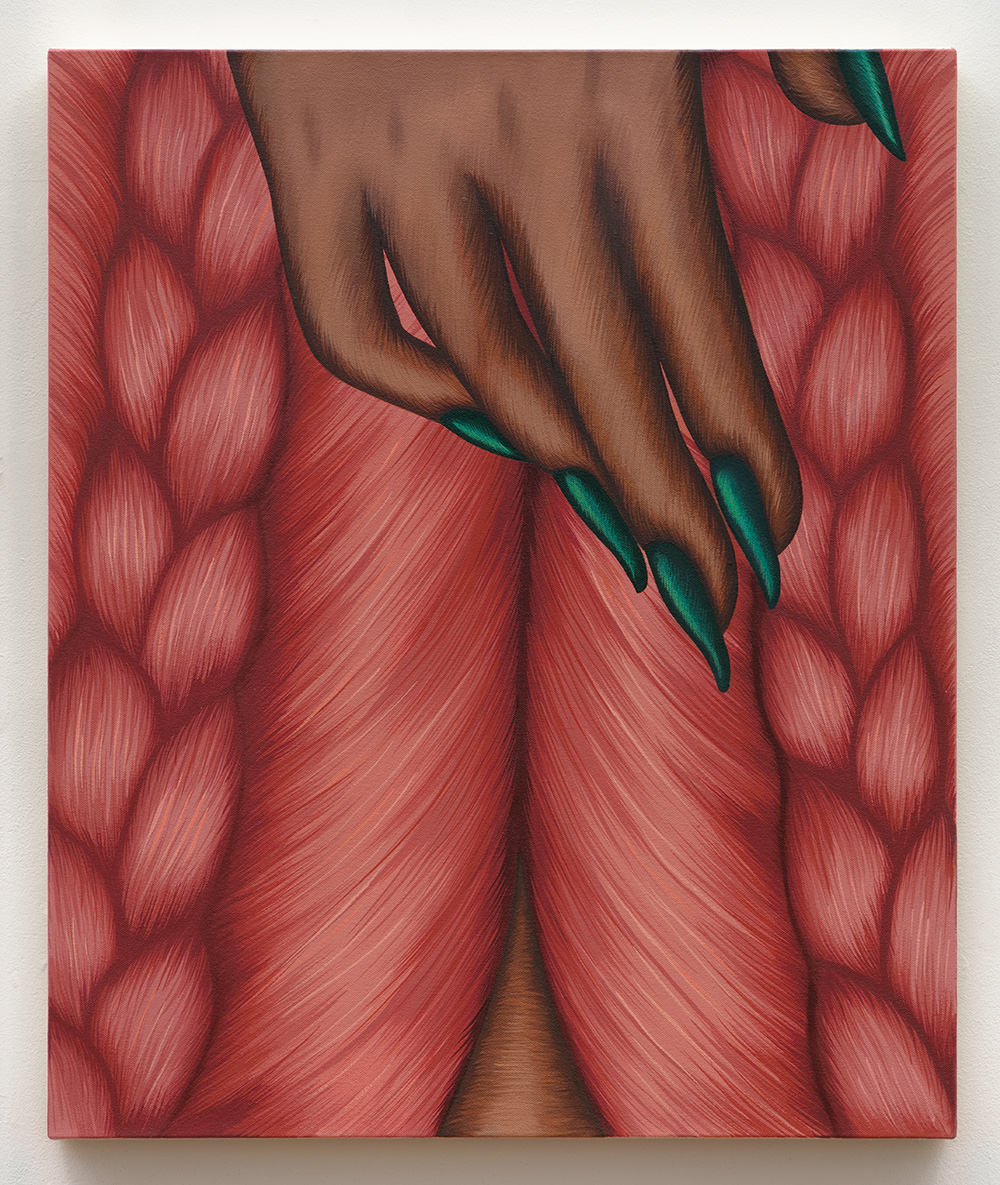
What was the last art show you went to that made you just want to go home and paint all day? Or is that every show?
Every art shows acts as a stimulant and makes me want to be a better artist. Sadly, I never go to shows as much as I want. However, I think the Grant Wood retrospective at the Whitney Museum was very inspiring: the rigor, the clarity of the compositions and the exaggeration of the forms. Recently, Sara Hantman and Esther Varet (VSF gallery) gave me the catalogue of Gertrude Abercrombie made by Karma Gallery for her retrospective show there last summer, and while I missed the show, I think it could have been one of my favorites had I seen it.
You have two upcoming shows with Anton Kern, a two-person show and your first solo show. How is the preparation for that going, and is there a little bit of excitement for you to have your first solo with a gallery that is really rolling well with a great roster of contemporary artists?
Mmm, just a little? Ha! A lot of excitement and also a little bit of anxiety? Some of my favorite artists, people I have been looking up to, are represented by Anton. The bar is definitely set high. I guess I just will just try to keep my head cool and work as best as I can. Anton and his team, especially Brigitte who is director there, are very supportive. Besides, my show will be paired with David Shrigley’s solo presentation on the first and second floor. I am a huge fan of his work. He really cracks me up.
In terms of advice you would give to another artist, what is the best thing to think of when you are about to have a show at such an esteemed gallery and you are now repped by them? What did you look for yourself?
My career picked up relatively recently so I wouldn't say I am very seasoned with business related things. I learned as things kept coming. Sometimes it's hard to dispense advice because everybody is in a different situation, and I have been, for a long time, in a situation where there is just nothing coming my way and I couldn’t be picky. The thing I often try to keep in mind is that when offered a show or anything art related, there is always the option to say: “Thank you so much and let me think about it”. I found, so far, that giving yourself a little bit of time to think goes a long way. Think of all the angles, about timeline. Do some research; ask around about people’s experience... An informed decision always pays off. It’s better to know what you are getting yourself into!
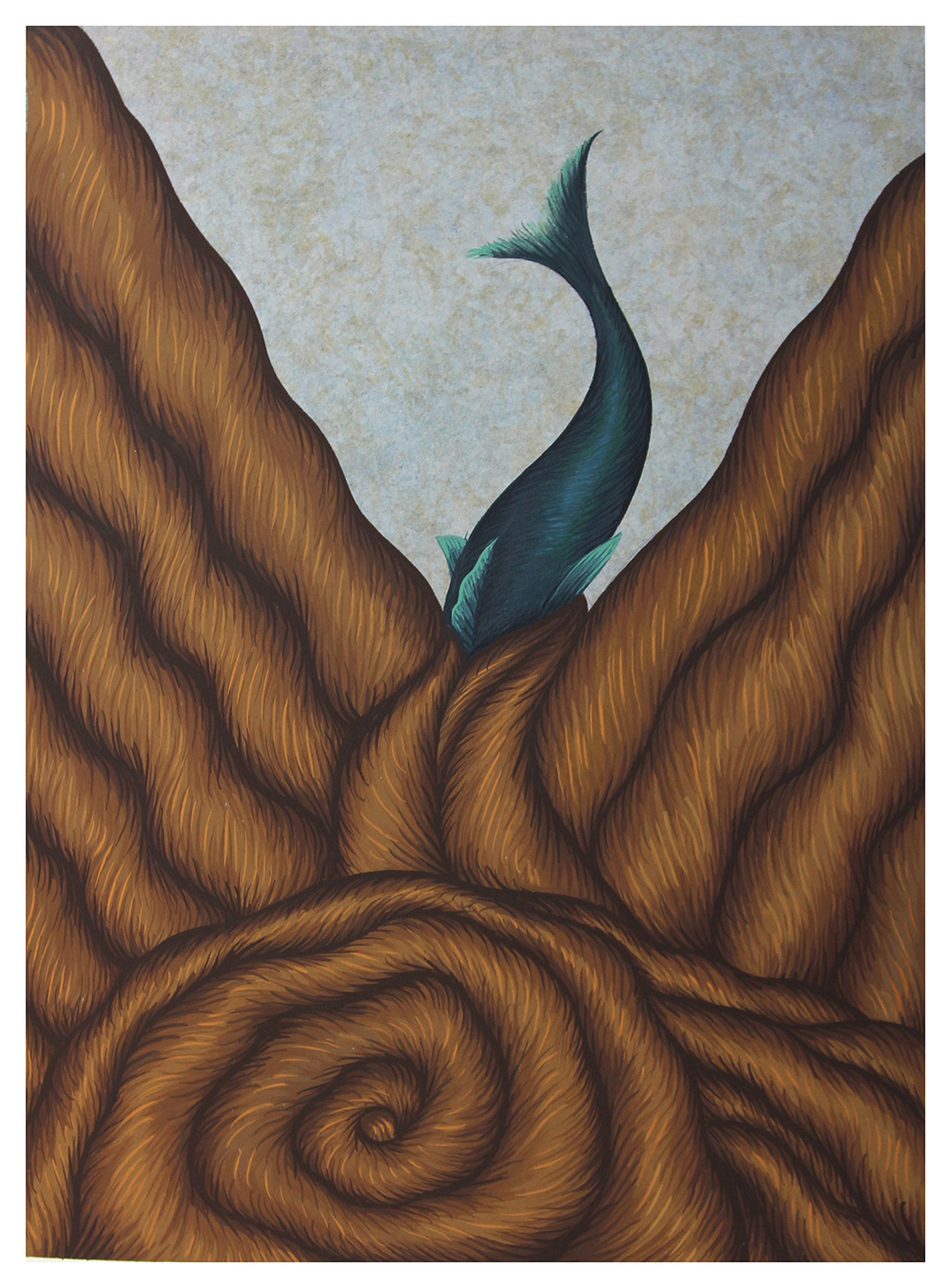
If you had your Midnight in Paris moment, where would your "era" be?
That's a tough question! My husband and I often play this game: "Where would you go if you could travel anywhere in time?” So many places! Medieval Europe, Japanese Edo Era, ancient Greece, and ancient Egypt, of course.
However, because of my origins, I think that I would go back to France and Europe, maybe a bit before Woody Allen's character, mid-nineteenth century, at the moment when modern western painting was really taking shape. It's really fascinating to imagine that people like Delacroix and Monet co-existed. The century went from Neoclassicism to post-Impressionism, even symbolism, worlds apart in the way the artist engages with the world. The idea of art for art's sake really started then, a shift of perception, moving away from religious themes and traditional canons to focus on nature and everyday life. Artists like Manet, Caillebotte or Degas gave me a window into their society and intimate lives. I think going to the museum as a little girl, my imagination was impressed by the power of art to make us travel in places and time.
What was the last thing you painted?
The last thing I painted is a toilet bowl!
Do you think you will sneak a face into your works anytime soon?
It’s a question I often ask myself. Sometimes avoiding faces does feel limiting. But the more I think about it, the more I find that working around limitations forces you to find creative solutions.
Julie Curtiss has a solo show opening at Anton Kern Gallery in NYC on April 25, 2019.
juliecurtiss.com





